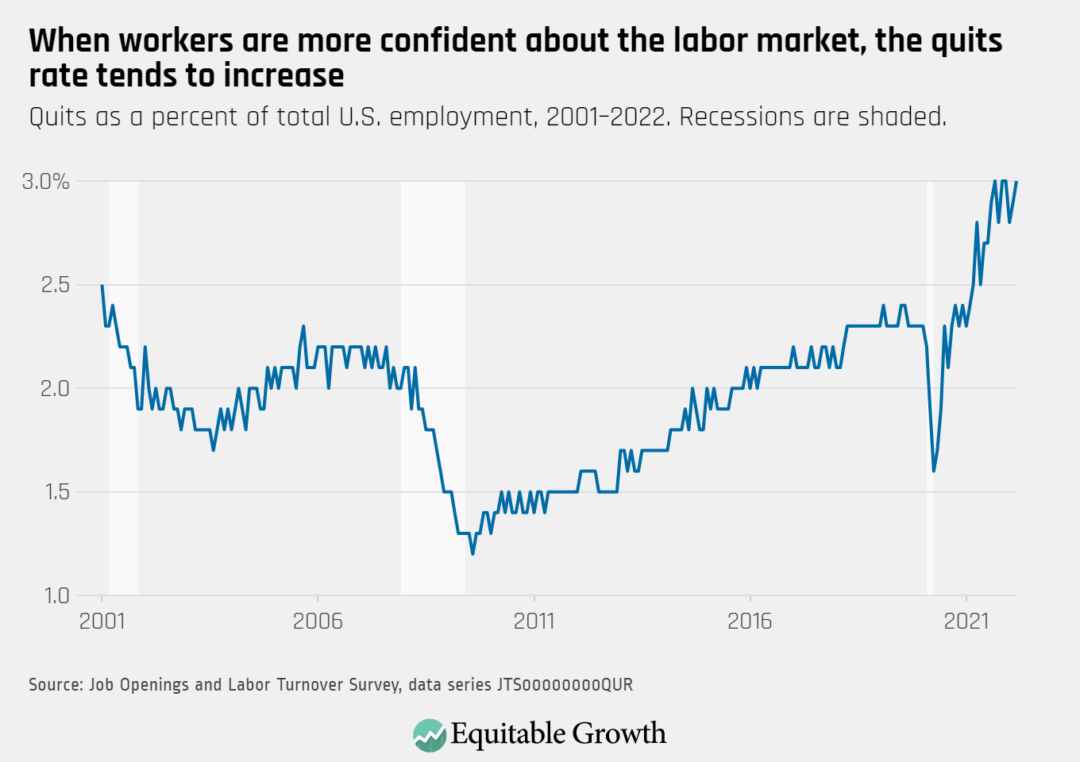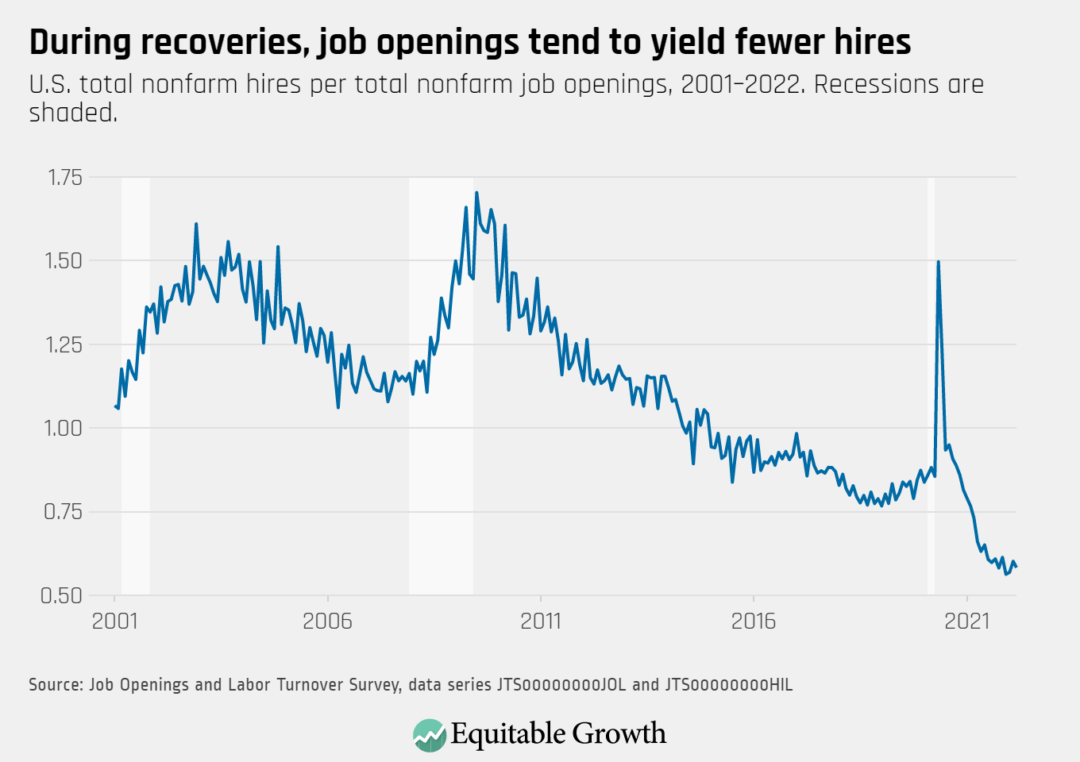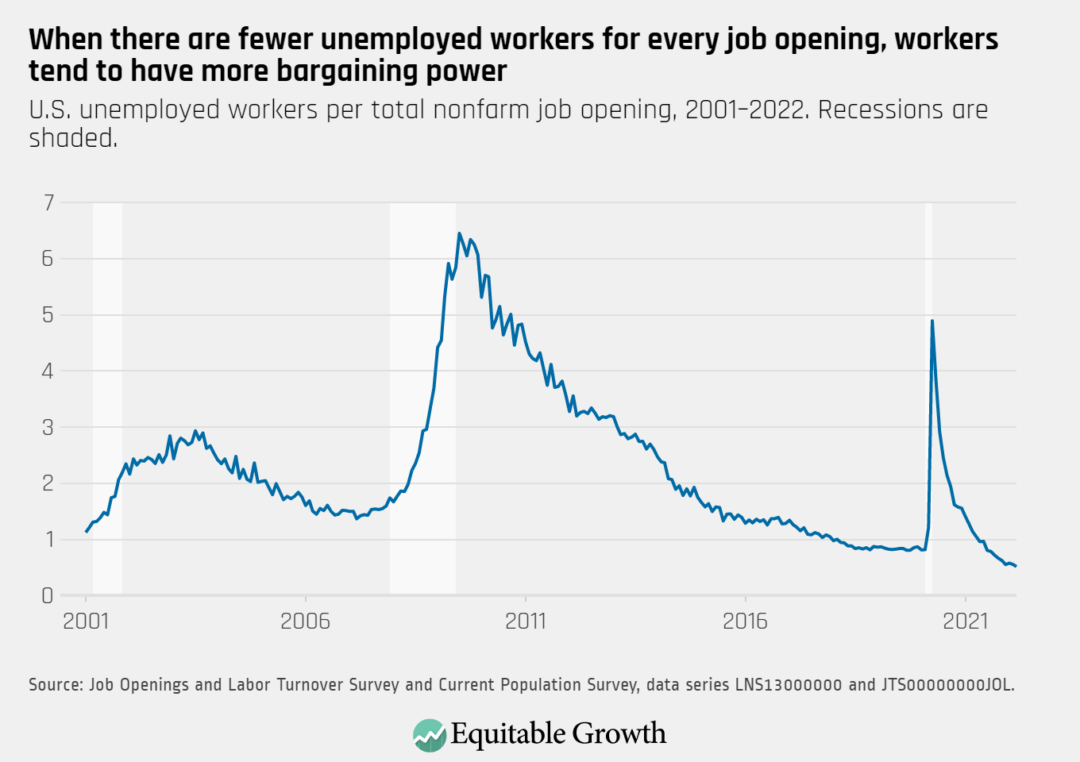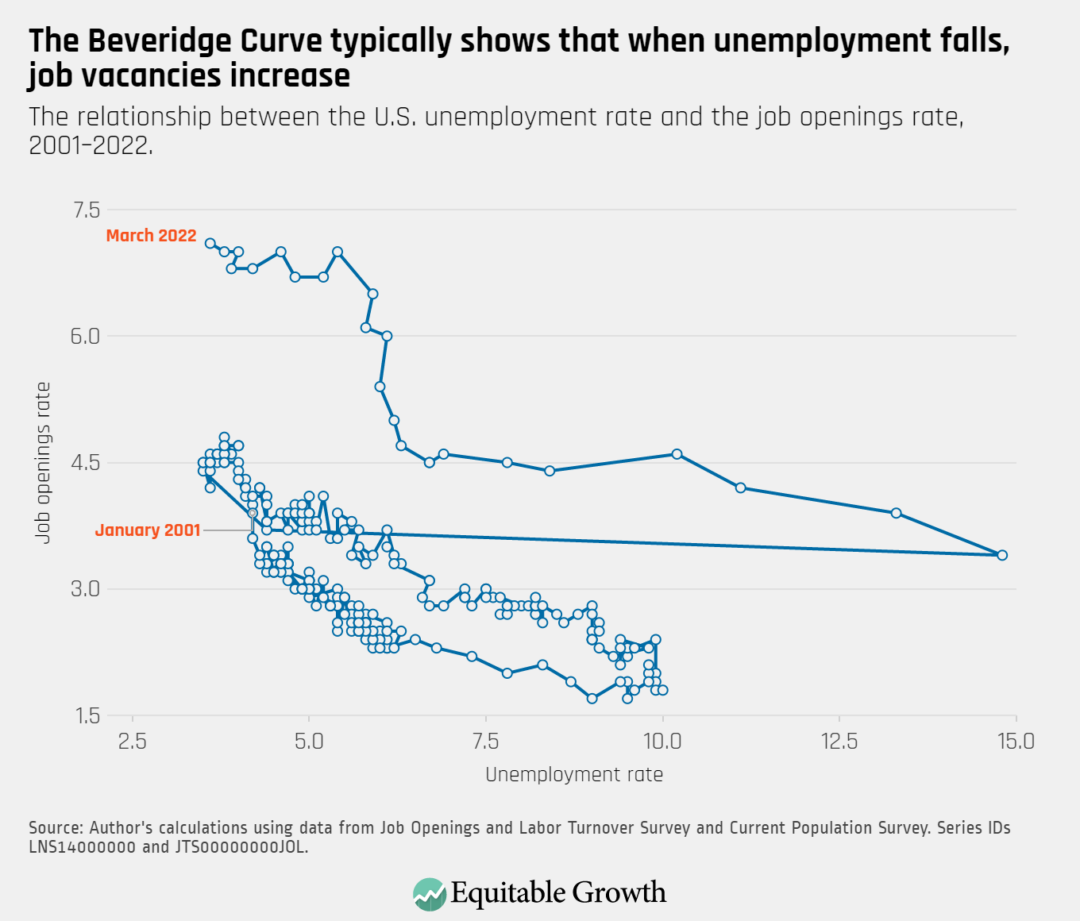JOLTS Day Graphs: March 2022 Edition
The quits rate increased slightly to 3.0 percent as 4.5 million workers quit their jobs in March, an increase of 152,000 from the previous month.

With the number of job openings reaching a series high of 11.5 million and hires at 6.7 million, the vacancy yield decreased to 0.58 in March.

The ratio of unemployed-worker-per-job-opening declined from 0.55 unemployed workers per job opening in February to 0.52 in March.

The Beveridge Curve continues to be in an atypical range in March compared to previous business cycles, as the unemployment rate declined and job openings increased.

